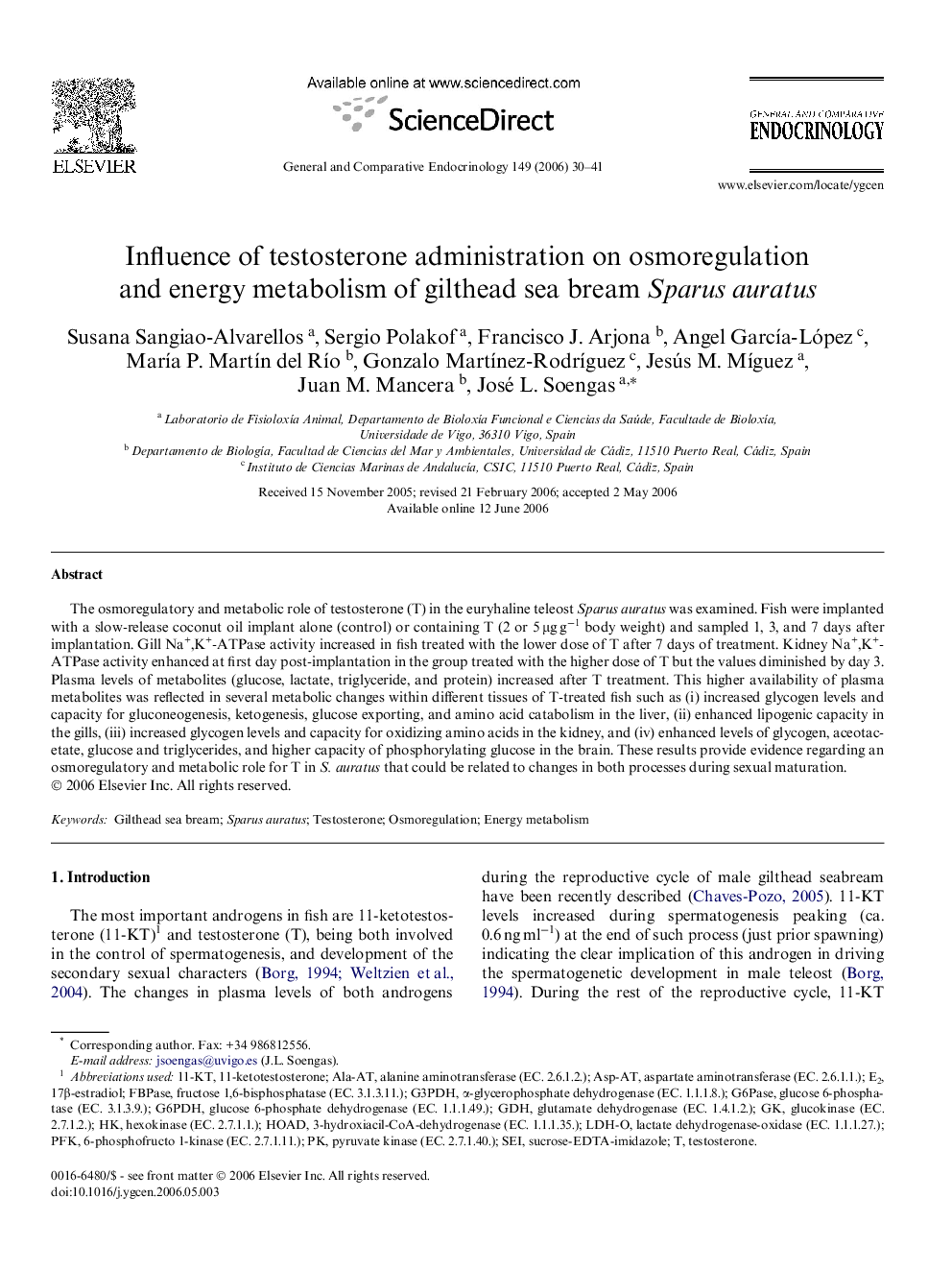| Article ID | Journal | Published Year | Pages | File Type |
|---|---|---|---|---|
| 2802295 | General and Comparative Endocrinology | 2006 | 12 Pages |
The osmoregulatory and metabolic role of testosterone (T) in the euryhaline teleost Sparus auratus was examined. Fish were implanted with a slow-release coconut oil implant alone (control) or containing T (2 or 5 μg g−1 body weight) and sampled 1, 3, and 7 days after implantation. Gill Na+,K+-ATPase activity increased in fish treated with the lower dose of T after 7 days of treatment. Kidney Na+,K+-ATPase activity enhanced at first day post-implantation in the group treated with the higher dose of T but the values diminished by day 3. Plasma levels of metabolites (glucose, lactate, triglyceride, and protein) increased after T treatment. This higher availability of plasma metabolites was reflected in several metabolic changes within different tissues of T-treated fish such as (i) increased glycogen levels and capacity for gluconeogenesis, ketogenesis, glucose exporting, and amino acid catabolism in the liver, (ii) enhanced lipogenic capacity in the gills, (iii) increased glycogen levels and capacity for oxidizing amino acids in the kidney, and (iv) enhanced levels of glycogen, aceotacetate, glucose and triglycerides, and higher capacity of phosphorylating glucose in the brain. These results provide evidence regarding an osmoregulatory and metabolic role for T in S. auratus that could be related to changes in both processes during sexual maturation.
